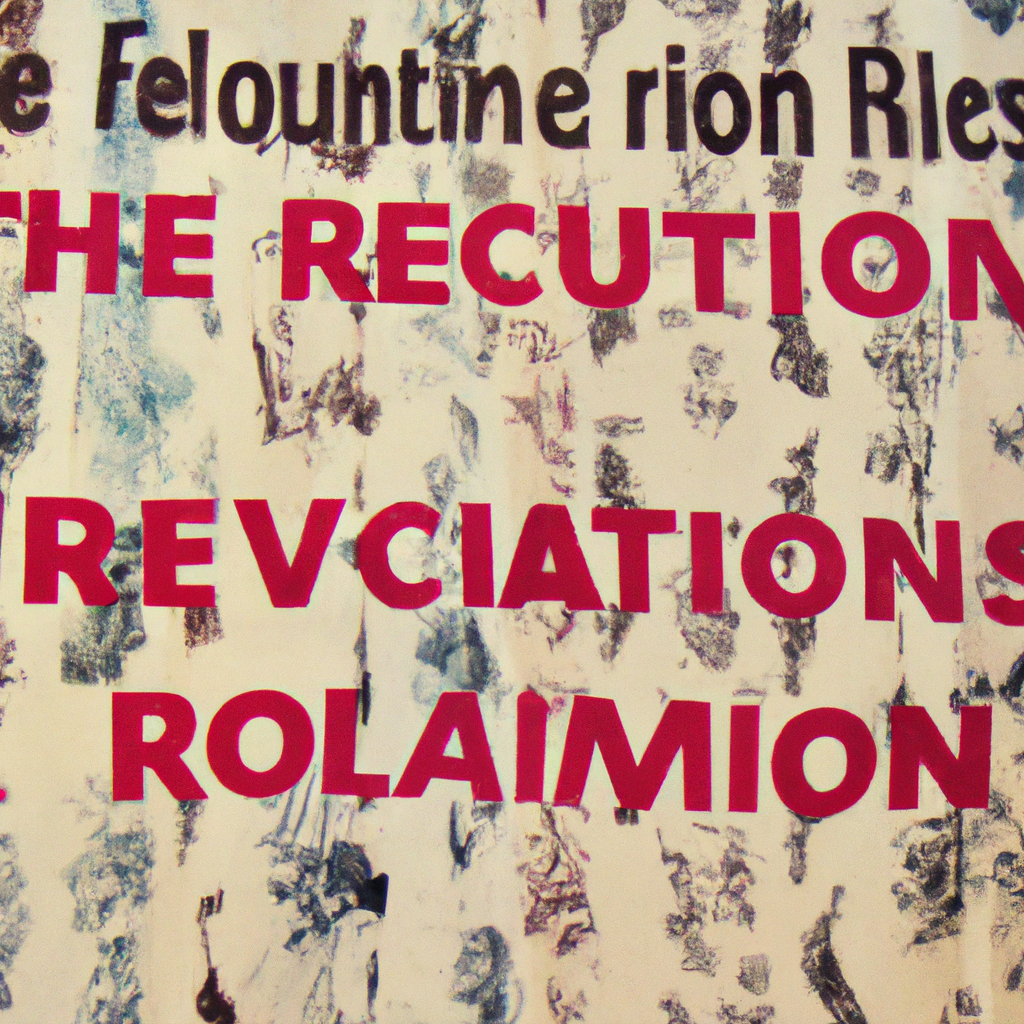The world of fashion has been changed forever by the two World Wars, providing us with an invaluable insight into how events have impacted the way we dress. Not only did the wars influence the styles of clothing worn, but also the materials used, the manufacturing process and the fabrics used. In this article, we will explore the powerful legacy of the World Wars on fashion and examine how the industry has been shaped as a result.
1. A Cataclysmic Change: The Impact of World Wars on Fashion
The dawn of the World Wars brought a cataclysmic change to the fashion industry, altering the course of fashion forever. Notably, the industry experienced drastic shifts in production methods, materials, and styles.
Shifts in Channel & Production
The fashion industry saw a drastic shift in production and channel of distribution due to the World Wars. Manufacturers had to streamline production process and readjust materials to focus on military needs. This caused textile production to shift to cheaper, sturdier materials, such as wool, as higher quality fabrics were used for military purposes. Instead of more popular high-end retail stores, clothing was mainly available in army and navy supply stores, with stores like Sears and JC Penney supplying more affordable options to men and women.
Gender Influences & Style Changes
The fashion industry experienced a significant shift along gender lines with the advent of World Wars. It was during this period that women engaged in a far more active role in the workforce, from the frontline to the factory (furthering the shift of textile production). This spurred fashion trends such as utilitarian clothing, with workwear silhouettes and concentration on practicality rather than overt femininity.
On the other hand, men turned to military-influenced style in attempt to emulate the attire worn by soldiers and ultimately signify patriotism. This included the introduction of the aviator’s jacket, bomber jacket, and the trench coat.
Modern Impact
- The fashion industry experienced a drastic overhaul due to World War I & II, moving away from traditional conventions and ultimately towards more utilitarian clothing.
- The shift in channel and production yielded fabrics such as wool, which subsequently became a fashion staple.
- Gender styles also shifted during the time with men and women adopting gender-specific styles to signify their patriotism and join the war effort.
- The impact of World Wars on fashion lives on in modern-day designs, with aviator’s jacket, bomber jackets, and trench coaste being influencing modern fashion designs.
2. Making Do: Thrifty Clothing During War-Time
In a time of war, when resources were restricted and budgets were tight, thrifty shopping became a way of life for many. Clothes had to be both long-lasting and functional – but that doesn’t mean they had to be boring. Here are some of the ways people kept up with trends during the war.
- Reinventing Clothes: Women would take a dress they already owned, cut it up, and create something completely new. This could either involve adding impactful details like dramatic collars or lengthening the skirt. The new look was often completed by adding vintage accessories as a finishing touch.
- Mending: Perfect for those on a tight budget, mending was essential during the WWII era. Women would carefully resew ripped hems, patch worn elbows, and darn torn stockings. The well-mended wardrobe could still look stylish, if a bit short on cash.
- Buying Used: During the war, department stores began introducing used sections to their stores. These sections were where women could find quality garments at very low prices, allowing them to afford more “extravagant” purchases.
Thanks to thrifty strategies, people were still able to find fashionable clothing even if their budget was minimal. Dresses were often given a new life by teasing the ends of the fabric for a more modern, youthful look. Accessories also added a touch of pizzazz, ranging from long white gloves to floral headpieces. Thrifty shoppers went above and beyond to make the most of their wardrobe – and still look stylish.
The creativity and innovation of the WWII era was reflected through thrifty fashion statements. People fashioned practical yet stylish looks, proving that you can make do even with scarce resources.
3. Cascading Effects: Influence of War Clothing on Post-War Fashion
After World War II, the fashion industry was booming in Europe and America. In the 1940s, people were actively engaged in war, and fashion became a critical way in which soldiers and civilians alike could express their patriotism and admiration for the cause. War clothing such as the trench coat, flight jackets, and field jackets, emerged as iconic fashion staples in the post-war period.
- Trench Coats: The most iconic clothing item of the post-war era was undoubtedly the trench coat. A staple of the 1940s wartime wardrobe, the trench coat was designed as a durable and lightweight garment that could withstand the adverse conditions of trench warfare. It was designed with neat, straight seams, double breasted construction, and coat lapels, and was often constructed of khaki-colored woolen cloth. After the war, the trench coat rose in popularity as a fashionable and practical garment, and it remains a staple of men’s fashion to this day.
- Flight Jackets: The flight jacket, also known as the bomber jacket, was originally designed for pilots and air crews during the war. It was designed to provide protection against the elements while the air crews were flying at high altitudes – the fabric was thick and insulated, and the jackets typically featured a fur or leather collar and cuffs. After the war, the flight jacket became a functioning fashion item and a symbol of postwar rebellion. It can still be seen today in men’s fashion collections.
- Field Jackets: Field jackets were developed for their durability and functionality. They were worn by soldiers in all weather conditions and terrains, and featured numerous pockets and a hood. They were typically constructed of thick canvas or cotton, and were designed for comfort and protection in the harsh conditions of active duty. After the war, these jackets were adopted by youth and rebelling cultures, and remain popular today.
Clearly, war clothing had a significant influence on post-war fashion. Military garments such as the trench coat, flight jacket, and field jacket were all adopted by designers, celebrities and youth cultures, and in some cases heavily revised or updated to suit a modern aesthetic. The popularity of war clothing in the post-war period led to a surge in the popularity of utilitarian fashion, which is still prevalent today. It’s clear that military apparel had a lasting and profound influence on the fashion industry and as a result, post-war fashion was heavily based on utilitarian designs, materials, and aesthetics.
4. Crafting a Revolution: The Emergence of Fashion Activism
The emergence of the fashion activist has its roots in the mid-2000s when groups started to form, marching on fashion week and using media as a tool to campaign against the exploitive fast-fashion industry. This emergence had many components, each responsible for playing their part in creating one powerful revolution.
- Event Planning & Convening Facilitation: Activists planned and hosted various events which drew people, organizations and celebrities together to network and collaborate in the cause.
- Research & Publications: Activists researched and published various studies which exposed the truth behind the detrimental facts of the fashion industry.
- Outreach & Public Engagement: Activists tirelessly engaged with members of the public, running campaigns and public talks to create awareness of the movement.
The result of this strong collective effort has been a growing sense of shared purpose and a popular movement that is transcending geographical boundaries. Indeed, the global clout and influence of the fashion activist movement is accompanied by a host of successes, from legislation changes to improved working conditions.
The fashion activist revolution has been as much about lobbying politicians and global legislators as it has been about encouraging individual wearers to, quite literally, wear their hearts on their sleeves. On the whole, the educational approach to the cause boom has started to show tangible impacts, with consumers more aware than ever before of their direct influence on the welfare of those in the industry.
Fashion activism is not a passing fad but rather a genuine attempt at transforming the fashion industry from exploiting practices to more sustainable and ethical working standards. It is still unclear how successful it will be in achieving its objectives, but the movement is undoubtedly making pillars.
The legacy of World Wars on fashion is easily visible today, from the mass-production of military uniforms to the way the influence of changing military culture has had a lasting impact on the way people dress today. The shift in fashion that accompanied the wars provided lasting but often uncredited contributions and inspiration for future fashion designers. While history won’t soon forget the losses suffered, it is heartening to see how the Fashion Revolution, emerging from the chaos and destruction, has allowed those who lived through it to look back and see how it has shaped the world of fashion for generations.

